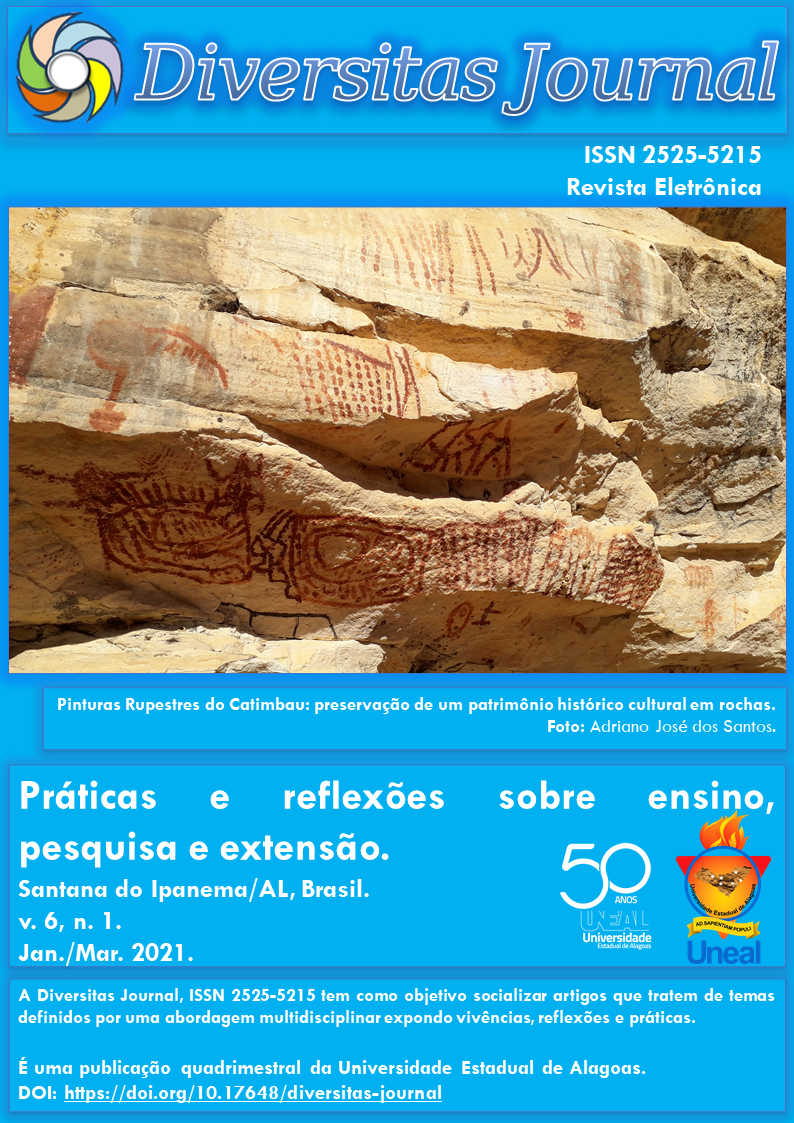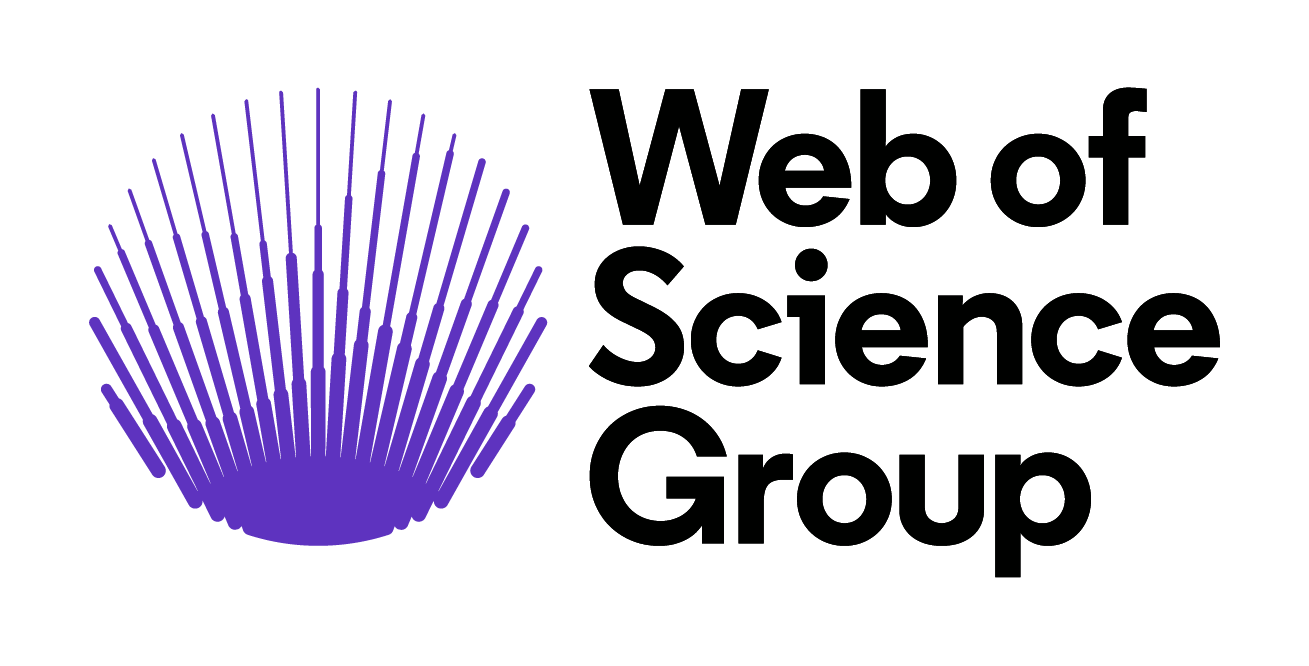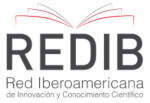Elementos associados à proficiência em Matemática: um estudo aplicado as escolas públicas em Alagoas
DOI:
https://doi.org/10.17648/diversitas-journal-v6i1-1487Abstract
ABSTRACT: This paper analyzes the determinants of education performance of students located in the State of Alagoas. The dependent variable considered is the scores obtained by the 5th grade elementary school’s students on Math tests and, as explanatory factors of the student’s performance, the school environment characteristics, family characteristics, and individual factors of the students. The employed methodology use a hierarchical or multilevel model, more indicated to deal with the hierarchical nature of educational data. In general, the results indicate that individual and family characteristics like gender, color, mother´s education, working condition, doing homework influenced proficiency. Among the school’s variables, highlight the relevance of schools’ physical infrastructure and the importance of teachers with a bachelor's degree. Therefore, we concluded that the grade in mathematics in the analyzed series is highly influenced by the student's attributes, but schools also add value to the students' performance. The model demonstrates that the student's working condition behaves differently between schools. In addition, it we found that the effect of family involvement affects performance less when the proportion of students behind in school is higher.
KEYWORDS: School Performance, Prova Brasil, Hierarchical Linear Modeling.
Metrics
References
ALAGOAS. Secretaria de Estado da Educação. Plano estadual de educação 2015-2025, Maceió, 2015.
ALBERNAZ, Ângela; FERREIRA, Francisco HG; FRANCO, Creso. Qualidade e equidade no ensino fundamental brasileiro. Pesquisa e Planejamento Econômico, v. 32, n.3, p. 453-476, 2002.
ALMEIDA, Aléssio Tony Cavalcanti de. Determinantes dos piores e melhores resultados educacionais dos alunos da rede pública de ensino fundamental no Brasil. Planejamento e Políticas Públicas, n.42, p.147-182, jan./jun., 2014.
ANDRADE, Josemberg M. de; LAROS, Jacob A. Fatores associados ao desempenho escolar: um estudo multinível com dados do SAEB/2001. Psicologia: Teoria e Pesquisa, v.23, n.1, p. 33-42, jan-mar, 2007.
BARBOSA, Maria Eugênia Ferrão; FERNANDES, Cristiano. Modelo multinível: uma aplicação a dados de avaliação educacional. Estudos em Avaliação Educacional, n. 22, p. 135-154, 2000.
BARBOSA, María Eugénia Ferrao; FERNANDES, Cristiano. A escola brasileira faz diferença? Uma investigação dos efeitos da escola na proficiência em Matemática dos alunos da 4ª série. Promoção, Ciclos e Avaliação Educacional. Curitiba: ArtMed, p. 155-172, 2001.
BARBOSA FILHO, Fernando de Holanda; DE ABREU PESSÔA, Samuel. Educação e crescimento: O que a evidência empírica e teórica mostra? Revista Economia, Brasília (DF), v.11, n. 2, p.265–303, 2010.
CASTRO, Maria Helena Guimarães de. Sistemas de avaliação da educação no Brasil: avanços e novos desafios. São Paulo em Perspectiva, São Paulo, Fundação Seade, v. 23, n. 1, p. 5-18, jan./jun,2009.
COLEMAN, James S.et al. Equality of Educational Opportunity. Washington: Office of Education and Welfare, 1966.
CURI, Andréa Zaitune; SOUZA, André Portela de. Medindo a qualidade das escolas: evidências para o Brasil. Economia Aplicada, v. 19, n. 3, p. 541-574, 2015.
FERRÃO, Maria Eugénia; FERNANDES, Cristiano. O efeito-escola e a mudança-dá para mudar? Evidências da investigação Brasileira. REICE: Revista Electrónica beroamericana sobre Calidad, Eficacia y Cambio em Educación, v. 1, n. 1, p. 1-13, 2003.
FRANCO, Creso et al.Qualidade e equidade em educação: reconsiderando o significado de “fatores intra-escolares”. Ensaio: Avaliação e Políticas Públicas em Educação, v. 15, n. 55, p. 277-298, 2007.
GOLDSTEIN, Harvey. Multilevel Statistical Models. New York: John Wiley & Sons, 1995.
HANUSHEK, Eric A. Publicly Provided Education. Handbook Of Public Economics, v. 4, p. 2045-2141, 2002.
HOX, Joop J. Multilevel Analysis: Techniques and Applications. Mahwah: Lawrence Erlbaum Associates, 2002.
INSTITUTO NACIONAL DE ESTUDOS E PESQUISAS EDUCACIONAIS ANÍSIO TEIXEIRA (INEP). Microdados: SAEB (Aneb/Prova Brasil). Brasília: INEP, 2017.
LAU, Lawrence J.; JAMISON, Dean T.; LOUAT, Frederic F. Education and Productivity in Developing Countries: An Aggregate Production Function Approach. World Bank Publications, 1991.
LEE, Valerie E. Using Hierarquical Linear Modeling to Study Social Contexts: the Case of School Effects. Educational Psychologist, v.35, n.2, p. 125-141, 2000.
LUKE, Douglas A. Multilevel Modeling. Quantitative Applications in the Social Sciences. Sage, v. 143, 2004.
MACHADO, Ana Flávia et al. Qualidade do Ensino em Matemática: Determinantes do Desempenho de Alunos em Escolas Públicas Estaduais Mineiras. Revista da Anpec, v. 9, n. 1, 2008.
PALERMO, Gabrielle A.; SILVA, Denise Britz do Nascimento; NOVELLINO, Maria Salet Ferreira. Fatores associados ao desempenho escolar: uma análise da proficiência em Matemática dos alunos do 5º ano do ensino fundamental da rede municipal do Rio de Janeiro. Revista Brasileira de Estudos de População (Impresso),v. 31, p. 367-394, 2014.
RIVKIN,Steven G.; HANUSHEK, Eric A.; KAIN, John F.Teachers, Schools, and Academic Achievement. Econometrica,v. 73, n. 2, p. 417-458, 2005.
SOARES, José Francisco.O efeito da escola no desempenho cognitivo de seus alunos. In: SOUZA, A. M. (org.) Dimensões da Avaliação Educacional. Petrópolis, RJ: Vozes, 2005.
________. Avaliação da qualidade da educação escolar brasileira. In: SWARTZMAN, F. F.; SWARTZMAN, I. F.; SWARTZMAN, L. F; SWARTZMAN, M. L. (Orgs.). O Sociólogo e as Políticas Públicas. 1ed. Rio de Janeiro: FGV Editora, p. 215-241, 2009.
SOARES, José Francisco; ALVES, Maria Teresa Gonzaga. Efeitos de escolas e municípiosna qualidade do ensino fundamental. Cadernos de Pesquisa, v.43, n.149, p.492-517, 2013.
TODOS PELA EDUCAÇÃO (TPE). De olho nas metas: Primeiro relatório de acompanhamento das 5 metas do Movimento Todos Pela Educação. São Paulo: Movimento Todos Pela Educação, 2008.
VIEIRA, Izabella da Silva. Avaliações em larga escala e o novo gerencialismo na educação: atuação do gestor educacional em Alagoas. 2017. Tese (Doutorado em Educação) –Centro de Educação, Programa de Pós Graduação em Educação, Universidade Federal de Alagoas, Maceió, 2017.
UNITED NATIONS EDUCATIONAL SCIENTIFIC AND CULTURAL ORGANIZATION(UNESCO). Declaração mundial sobre educação para todos: satisfação das necessidades básicas de aprendizagem. Jomtien, 1990.
WENGLINSKY, Harold. Teacher classroom practices and student performance: How schools can make a difference. ETS Research Report Series, v. 2001, n. 2, p. i-37, 2001.
Downloads
Published
How to Cite
Issue
Section
License
Copyright (c) 2021 Josiane Souza de de Paula

This work is licensed under a Creative Commons Attribution 4.0 International License.
The Diversitas Journal expresses that the articles are the sole responsibility of the Authors, who are familiar with Brazilian and international legislation.
Articles are peer-reviewed and care should be taken to warn of the possible incidence of plagiarism. However, plagiarism is an indisputable action by the authors.
The violation of copyright is a crime, provided for in article 184 of the Brazilian Penal Code: “Art. 184 Violating copyright and related rights: Penalty - detention, from 3 (three) months to 1 (one) year, or fine. § 1 If the violation consists of total or partial reproduction, for the purpose of direct or indirect profit, by any means or process, of intellectual work, interpretation, performance or phonogram, without the express authorization of the author, the performer, the producer , as the case may be, or whoever represents them: Penalty - imprisonment, from 2 (two) to 4 (four) years, and a fine. ”


















